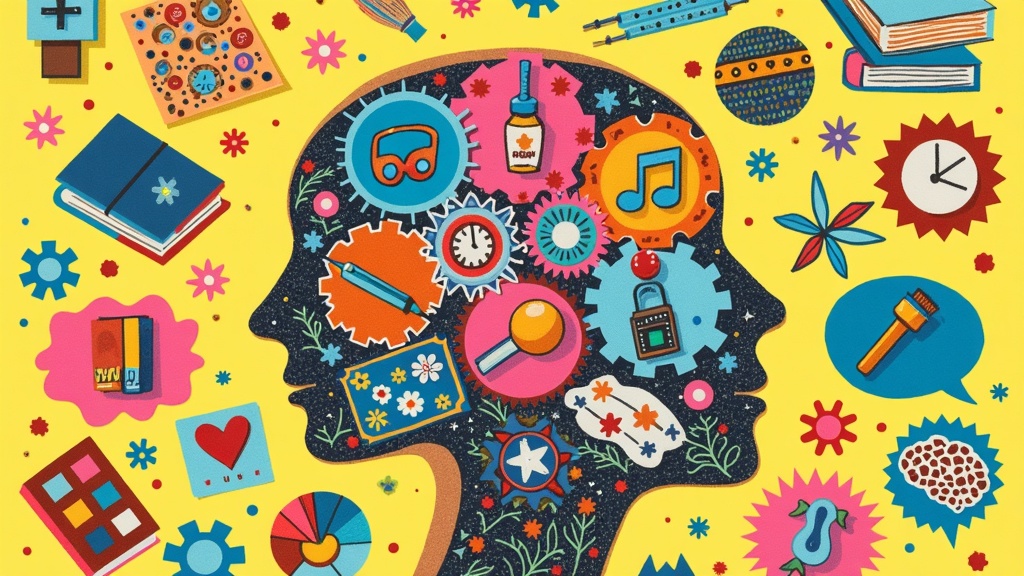Developing multiple intelligences goes far beyond just memorizing facts or acing exams. It’s about helping people track down their own strengths and learn in ways that really work for them. The idea here is to tap into different kinds of smart, such as being good at words, music, logic, or even understanding people, and roll out activities that match each style. In this guide, I’m sharing practical and fun activities for nurturing every type of intelligence, so you can add variety to any learning routine at school, at home, or wherever you want to help minds grow.

What Are Multiple Intelligences?
If you’re new to the concept, multiple intelligences is a theory by Howard Gardner that explains people are smart in different ways. Instead of seeing intelligence as one thing, Gardner breaks it down into areas like verbal, logical, visual, musical, physical, social, self-awareness, and naturalist abilities. In real life, most of us show a mix of these smarts, but often lean into a few.
Understanding this can seriously open up the way you approach learning. Whether you’re helping kids, learning yourself, or just want a fresh take on skill-building, lining up activities with these different forms of intelligence makes it easier to keep everyone motivated and makes learning way more interesting.
Easy Activities for Each of the 8 Multiple Intelligences
Building up strengths in each intelligence looks a little different. So, let’s take a look at the activities I think you’ll really like for every type:
- Verbal Linguistic: Encourages wordplay, storytelling, and communication.
- Logical Mathematical: Boosts thinking, reasoning, and pattern recognition.
- Visual Spatial: Involves drawing, imagining, and organizing space.
- Musical: Connects with rhythm, sounds, and melodies.
- Bodily Kinesthetic: Focuses on movement, touch, and handson skills.
- Interpersonal: Shines in group settings, collaboration, and empathy-building.
- Intrapersonal: Helps with self-reflection, goal-setting, and personal growth.
- Naturalist: Highlights observation and appreciation for the world outside.
Practical Ideas to Try for Every Intelligence
Verbal Linguistic
People strong in this area love words and stories. I’ve found these activities can truly bring out their best:
- Write short stories or poems around a theme or prompt.
- Host a mini debate on a fun topic. This is great for building confidence too.
- Start a book club and chat about favorite characters or big plot twists.
- Invent a new language using playful sounds and rules to tell a secret message.
Logical Mathematical
If you know someone who likes solving problems or cracking codes, these are solid choices:
- Work through puzzles or riddles, such as Sudoku or brain teasers.
- Set up simple science experiments with stuff from around the house. For instance, make a homemade volcano in a bottle.
- Try strategy board games like chess or checkers.
- Arrange a math scavenger hunt by finding items that fit number clues.
Visual Spatial
This intelligence is about seeing pictures in your mind and making sense of visual details. These activities are really handy:
- Draw maps or design treasure hunts complete with illustrated clues.
- Use building blocks like LEGO to dream up original creations.
- Experiment with digital design tools, for example Google Slides or simple paint apps.
- Try making a vision board by cutting and pasting magazine images of goals or dreams.
Musical
Ever notice someone tapping out a beat or humming all day? They’ll connect with:
- Write a simple song about daily life or feelings.
- Try rhythm games like clapping patterns back and forth.
- Explore basic sound mixing with apps that let you blend beats or loops.
- Listen to music from different cultures and try to spot unique rhythms.
Bodily Kinesthetic
If you or your learner never seem to sit still, movement-based activities are a win:
- Create an obstacle course indoors or outside using furniture and items you have.
- Start a DIY craft project, like making puppets, homemade slime, or hand-painted t-shirts.
- Follow along with yoga or dance videos for fun guided movement.
- Try role-play exercises that use real props—think acting out a story using costume pieces found around the house.
Interpersonal
This is all about understanding and working with others. Give these a go:
- Group projects where everyone brings their own ideas, like poster-making or creating a shared mural.
- Try games that involve teamwork, such as charades or scavenger hunts where success depends on group strategy.
- Role-play real-world scenarios like running a pretend shop, practicing interviews, or negotiating trades.
- Create a peer interview activity where each person asks and answers questions to learn more about each other.
Intrapersonal
For anyone who’s a deep thinker, these activities help with self-awareness and goal-setting:
- Keep a daily reflection journal to jot down feelings, successes, and challenges.
- Goal-mapping—sketch out or write down steps to achieve something big or small.
- Do meditation or guided breathing exercises for calm and grounding.
- Create a “strengths inventory” listing personal talents, best moments, and things to try in the future.
Naturalist
This one’s all about connecting with nature. It’s super useful for unplugging and resetting:
- Go on nature walks with checklists (“How many plant or animal species did you spot today?”).
- Plant a mini garden or start a window box and track growth weekly.
- Classify rocks, leaves, or shells and assemble a nature scrapbook with photos and descriptions.
- Try starting a compost bin and learn about decomposition and recycling in your backyard.
Things to Think About When Choosing Activities
The best activities consider what people enjoy, not just what someone else says is effective. Here are a few quick reminders to keep things rolling:
- Interest matters! Kids and adults stick with things they like, so it’s a smart move to ask for their preferences.
- Switch things up. Varying activities avoids burnout and sparks growth in new areas.
- Make space for creative freedom. Sometimes, unexpected moments or going “off-script” bring the best lessons.
- Collaboration or solo? Some thrive in groups while others shine alone—both methods have value, so mix them in.
Common Challenges and How to Work With Them
Finding enough time, keeping up motivation, or getting the right resources can be tricky. Here are some ways to work through these:
- Use what you have. Everyday items double as learning tools. Measuring cups for fractions, kitchen spices for a smell-matching game, or cardboard for building models all work well.
- Share the process. Learning together naturally boosts accountability and enjoyment, whether you’re a family, team, or class.
- Stay flexible. If something’s just not working, it’s okay to switch course and try something that fits better.
Taking Multiple Intelligences Further
Growing each type of intelligence doesn’t end after one activity. There are plenty of ways to build complexity as skills get stronger:
- Start projectbased learning where different intelligences join forces. Planning a community garden, for example, uses logical, bodily, spatial, and interpersonal smarts.
- Combine areas. Have someone write a song (musical and linguistic), then film and edit a video for it (visual spatial, bodily kinesthetic).
- Keep exploring new ideas with fresh apps, books, videos, and resources. There’s always something out there to spark the next breakthrough.
- Invite others to participate so each person can contribute their strengths and gain inspiration from others’ approaches.
Reallife Uses for Multiple Intelligence Activities
Nurturing multiple intelligences isn’t limited to classrooms or formal lessons. Here’s how they fit into everyday life:
- Team building at work: Puzzles, group challenges, or creative storytelling sessions in meetings shake things up and help everyone communicate better.
- Family time: Game nights, nature walks, or music sessions tap into all sorts of smarts outside of screens.
- Personal growth: Reflective journaling, learning a new instrument, or tackling DIY projects all support different aspects of intelligence over time.
- Community engagement: Organize a local clean-up, lead a workshop, or host a creative event to boost problem-solving, social, and naturalist smarts while making a real difference.
Frequently Asked Questions
Here are a few questions that often pop up about multiple intelligence activities:
Question: Does everyone have all eight intelligences?
Answer: Most people show all the intelligences, but they’re usually stronger in a few areas. Activities like these help pump up the others as well.
Question: Can these activities work for adults, or are they just for kids?
Answer: They’re for everyone! Many adults put these approaches to work for personal growth, workplace learning, or just to keep life interesting and engaging.
Question: How do I know which intelligence is my strongest?
Answer: Try out activities from every area and notice which ones feel natural or fun for you. There are also free online quizzes that give you a quick snapshot of your strengths.
Wrapping Up
Switching up activities for multiple intelligences gives learning a fun and personal twist. You’ll see better engagement, fresh energy, and stronger skills across the board. Whether you’re a teacher, parent, or lifelong learner, these ideas are worth checking out for making any learning space more dynamic and rewarding.

